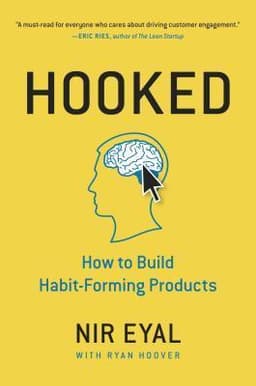
Hooked Book Summary
How to Build Habit-Forming Products
Book by Nir Eyal
Summary
Hooked provides a practical framework for designing habit-forming products that solve users' problems and improve their lives, while cautioning against the ethical risks of misapplying persuasive technology.
Sign in to rate
Average Rating: 1
The Habit Zone
For a product to be habit-forming, it needs to have two key elements: high frequency of use and high perceived utility. When both of these elements are strong enough, the product enters what Eyal calls "The Habit Zone" - it becomes a default behavior that users do with little or no conscious thought.
Some examples are checking email multiple times per day or searching on Google whenever a question comes to mind. These products are deeply embedded behavioral habits for many users.
Forming user habits gives businesses major advantages, including higher customer lifetime value (users stay longer), pricing flexibility (habits make users less price sensitive), supercharged growth through frequent usage, and a sharp competitive edge (users are less likely to switch).
However, habits are generally hard to form, as old habits die hard. The enemy of forming new habits is past behaviors and routines that are etched into users' minds. Even when users want to change, old neural pathways remain, ready to be reactivated with any lapse in the new routine.
Section: 1, Chapter: 1
Forming Habits
"The more frequently the behavior occurs, the stronger the habit. This is one reason why many habit-forming products are used daily. Using a product every day deepens the habit associated with it."
Section: 1, Chapter: 1
Vitamins vs Painkillers
Eyal uses a vitamin vs painkiller analogy to describe one key difference between nice-to-have products versus must-have products.
- Vitamins are "nice-to-have" products - they don't solve an obvious pain point and aren't absolutely critical. The benefits are often more abstract and less immediately perceptible.
- Painkillers, on the other hand, solve an acute need or pain point. The relieving effect is more noticeable and immediate. Users can more clearly link using the product to alleviating their problem.
Interestingly, many habit-forming products start as vitamins but evolve into painkillers as the habit takes hold. For example, Instagram may have initially been a nice-to-have photo sharing app. But for many users, as a strong habit formed, it turned into a must-have that alleviates boredom, loneliness, and FOMO (fear of missing out). The perceived utility increased as the habit rooted itself.
Section: 1, Chapter: 1
Triggers
Two Types of Triggers
The "Trigger" is the actuator of a behavior - the spark plug that sets the engine in motion. Without a trigger to cue the user, no behavior happens.
There are two types of triggers:
- External triggers are cues in the user's environment that provide information for what to do next. App icons, email notifications, ads and promotions are all examples of external triggers. They tell the user what action to take next and provide a clear call-to-action.
- Internal triggers arise from within the user's own mind as associations with certain emotions, routines, or situations. When a user feels lonely, an internal trigger may cue them to open Facebook. When bored, an internal trigger prompts launching a game or browsing YouTube.
Here's the key: Habit-forming products often start by using external triggers to get users to take the intended actions. But through repeated usage, they aim to form strong associations with internal triggers, so users are cued automatically without needing an external prompt.
The goal is to get users responding automatically to internal triggers by opening your app or using your product as the solution to their emotional need or situation. Once this happens, the habit is firmly rooted in users' everyday routines and emotional realities.
Section: 1, Chapter: 2
The 5 Whys Method
To uncover what internal triggers are prompting users to action, Eyal recommends a technique called the 5 Whys Method:
- Start by clearly defining the behavior you want to turn into a habit. Then ask: "Why does the user want to use this product or feature?"
- Come up with your clearest answer to the first why.
- Then ask why again, but this time in response to your answer from step 2. "Why is that?"
- Repeat this process of asking "Why?" to your previous answer at least 5 times. Each time you're getting deeper into the underlying human motivation.
- By the time you get to the 4th or 5th why, you'll likely have reached the deepest underlying emotional reason - the root cause - that drives the behavior. This gives you the internal trigger your product must ultimately address.
Section: 1, Chapter: 2
Action
The Fogg Behavior Model
Eyal describes the Fogg Behavior Model created by famous Stanford professor BJ Fogg, which states that for any behavior to occur, three things must be present:
- Sufficient motivation - The user must have some level of desire to take the action. There are three core motivators: seeking pleasure/avoiding pain, seeking hope/avoiding fear, seeking social acceptance/avoiding rejection.
- Sufficient ability - The user must have the capacity to complete the desired action. This means it must be easy enough to do. Six factors influence this: time, money, physical effort required, mental effort required, degree of social deviance, and how routine it is.
- A trigger to activate the behavior - This is the cue (external or internal as described earlier) that prompts the action and sets the behavior in motion.
Fogg presents this in a simple formula: B=MAT. A given Behavior will only occur if Motivation, Ability, and a Trigger are all present in sufficient quantities.
Eyal notes that of the three, increasing ability (making the action easier to do) is the most reliable way to increase the desired behavior. Increasing the simplicity of the action makes users more likely to do it.
Section: 1, Chapter: 3
The Six Elements of Simplicity
Fogg outlines six "elements of simplicity" that influence a task's difficulty:
- Time - How much time will this action take? The quicker the better.
- Money - What is the fiscal cost of taking the action? Cheaper is simpler.
- Physical Effort - How much labor is involved in taking the action? Less effort equals more simplicity.
- Brain Cycles - What level of mental effort and focus is required? The less thinking the simpler it is.
- Social Deviance - How socially acceptable is this behavior? Socially normal behaviors are simpler.
- Non-Routine - How much does this action disrupt current routines? More familiar and routine actions are simpler.
Section: 1, Chapter: 3
The Scarcity Effect
The Scarcity Effect is a well-studied phenomenon in consumer psychology that Eyal highlights. In one famous study, researchers put 10 cookies in one jar and 2 of the same cookies in another jar. Participants consistently rated the cookies from the nearly empty jar as more desirable. Even though the cookies were exactly the same, scarcity made them appear more valuable. Why?
- We fear missing out on experiences or resources that are less available
- If something is scarce, we assume others must know it's good and are snapping it up
- The pain of losing something is greater than the pleasure of acquiring it
Many companies leverage the scarcity effect to boost sales using tactics like:
- Promoting "limited time offers"
- Highlighting items "selling out fast"
- Offering exclusive access to certain customers
- Showing when "only a few items are left" in stock
Section: 1, Chapter: 3
Rewards
The Power of Variable Rewards
The third step in the Hooked Model is the Variable Reward phase. This is the phase where, in response to the user's action, the product delivers a reward. However, the reward is variable - it changes each time and contains an element of surprise or chance. This variability dramatically increases the likelihood of repeating the action and forming a habit.
Our brains are adapted to seek rewards, but it's not the reward itself that drives us, it's the craving for a reward. When there's variability, our brains surge with the neurotransmitter dopamine which drives our hungry search for rewards.
This effect was first discovered by psychologist B.F. Skinner in the 1950s. In experiments, he found that mice responded most voraciously to random rewards delivered after a varying number of actions. The mice would press a lever repeatedly, not knowing when the next treat would come, but driven by the anticipation that it eventually would.
For example: Social media apps provide social validation, but you never know which post will garner likes. Slot machines provide monetary rewards at irregular intervals.
Section: 1, Chapter: 4
Variable Rewards: Tribe, Hunt and Self
Eyal categorizes variable rewards into three types:
- Rewards of the Tribe - These are social rewards powered by connectedness with other people. We are driven to acquire resources and recognition that make us feel accepted. Examples are likes, comments, shares, upvotes. Variability is introduced because you never know which social post will garner response and acceptance.
- Rewards of the Hunt - These are rewards associated with the search for material resources and information. The excitement of the hunt itself is a reward, even if the material prize is not guaranteed. Examples are scrolling on Instagram for new posts or browsing potential matches on dating apps. The variability lies in not knowing when you'll find the next appealing piece of content or product.
- Rewards of the Self - These are intrinsic rewards of mastery, competence, and completion. We are motivated to acquire skills and finish tasks, even if no outward rewards are immediately received. Examples are completing a level in a mobile game, clearing your email inbox to zero, or checking an item off a to-do list. The variability comes from not knowing how difficult the challenge will be or how long it will take to achieve the feeling of mastery.
The most habit-forming products utilize multiple types of variable rewards to keep users coming back and striving to achieve goals.
Section: 1, Chapter: 4
Maintain Sense of Autonomy
While variable rewards are extremely powerful in driving habit formation, they must be used carefully to avoid user backlash, and ensure users don't feel coerced or manipulated.
To avoid this, Eyal argues you must always maintain the user's sense of autonomy. The user must feel they are in control and taking actions of their own volition:
- Allow the user to customize their experience and make meaningful choices
- Be transparent about how the product works and what is happening at each step
- Provide options for the user to limit notifications or disengage if desired
- Frame desired actions as opportunities, not requirements
The goal is to position your product's triggers as welcome and helpful nudges aligned with the user's own internal motivations, not manipulations in service of the company's agenda. The product is there to serve the user, empower them, and enhance their life.
Section: 1, Chapter: 4
Investment
More Investment, More Value
The 4th step in the Hooked Model is the Investment Phase. This is the point where the user is asked to put something of their own back into the product. This can be time, effort, social capital, money, or data.
Eyal argues this phase is critical because we irrationally value our own work. Multiple psychological studies have shown that the more effort we put into something, the more we value it. This is sometimes called "The IKEA Effect".
By getting the user to invest in the product, you increase how much they value their interaction with the product and how likely they are to keep investing in it in the future. Their contributions make the product better, more personalized, and harder to leave.
Some examples:
- Adding content to Pinterest makes your feed more relevant, so you're more likely to keep pinning
- Following people on Twitter gradually makes your feed more and more interesting with each follow
- Building a music library on Spotify creates more value for you with each song saved
- Adding your profile info and history to LinkedIn makes it a more valuable asset for your career
After investing, the user feels committed to maintaining and improving the value of their asset, baiting the hook for the next pass through the cycle.
Section: 1, Chapter: 5
Stored Value - How Users Invest
There are many ways users invest value in products they use habitually. Eyal outlines several common types of investment that increase the durability of consumer habits:
- Content - When users create or curate content within the context of the product, they are investing their time and effort to make the product experience more valuable. Examples could be songs added on Spotify, boards created on Pinterest, or posts composed on Facebook.
- Data - Many products become better the more information the user invests in them. LinkedIn profiles get more complete, Netflix recommendations improve, and Amazon's product suggestions get more accurate.
- Followers - For many social products, a key investment is the community of followers or friends the user builds within that network. The more people you follow on Twitter or connect with on Snapchat, the more potential interactions and social rewards you can expect.
- Reputation - Some products allow users to build a reputation score that unlocks additional privileges or statuses. Examples could be seller ratings on eBay, driver ratings on Lyft, or top reviewer badges on Yelp.
- Skill - For more complex products, users invest time in learning and mastering the workflows and features involved. The more expertise they gain, the more the product delivers value to them. Think professional software like Photoshop or Excel.
Section: 1, Chapter: 5
Loading the Next Trigger
Beyond storing value for the future, Eyal notes another crucial function of the Investment Phase - setting up the next external trigger to start the Hook cycle over again.
- After the reward, the user is given an opportunity to make a small investment (i.e. entering some data, following an account, setting a preference).
- Making that investment gives the product permission to contact the user with a new external trigger (i.e. a notification, email, or message) at a later time.
- When the new trigger arrives, it cues the user back into the product to take the next action, restarting their journey through the Hook cycle.
In this way, by making a small investment, the user is basically setting up their own triggers, often unconsciously. They took an action that loaded the next trigger and will likely lead them back to using the product in response to their internal trigger.
Some examples:
- After viewing a photo on Instagram, you leave a comment. That action prompts a notification the next time someone likes or replies to your comment, bringing you back to the app.
- After watching a YouTube video, you subscribe to that channel. Now when that creator posts a new video, you'll get an alert drawing you back to watch again.
Section: -1, Chapter: 5
Using the Hooked Model for Good
With the rise of infinite-scroll feeds, autoplaying videos, and AI-powered recommendations, skeptics have accused many tech products of using habit-forming loops to addict and manipulate users for profit.
Eyal argues this criticism, while understandable, misses a key point - not all habits are bad, and well-designed habit loops can dramatically improve people's lives. e.g to establish exercise routines, learn new skills, connect with their loved ones, and make progress towards goals.
The key is the intent behind the deployment of the Hook cycles. Eyal advises designers to build habit-forming products that they themselves would actually want to use and believe materially improve users' lives. If you wouldn't use it, don't build it.
He proposes a "manipulation matrix" to consider the ethics of your hooks:
- Is it materially improving the user's life?
- Would I use it myself?
If both answers are yes, you're creating a positive habit. If both are no, it's manipulation.
Section: 1, Chapter: 6
Building a Habit for Others
Building a habit for a user other than you requires empathy. You'll need to step out of your own needs and desires to really understand what's going on with them. It's not an easy thing to do...but the closer [you] can get to empathizing with that user, the better chance [you] have of building something that fits their needs.
Section: 1, Chapter: 6
Case Study - The Bible App
With over 250 million downloads, YouVersion's Bible App is one of the most widely used mobile apps ever created. Eyal analyzes how the app used the principles of the Hooked Model to drive such massive adoption and engagement.
- Triggers: App icon right on the home screen reminds users to open the app every time they look at their phone. They partnered with churches, so pastors prompt the whole congregation to open the app together during sermons. Daily push notifications remind users to open the app to read their personalized Bible verse and complete their reading plan
- Action: Focused on daily reading plans broken into small sections, so taking the key action (reading the Bible passage) is quick and easy to perform regularly. Audio versions of each passage allow busy users to complete their reading even while multitasking.
- Variable Rewards: Passages are served up in small sections each day, so there's always a bit of mystery and variability around what the next insight will be. Verses are often related to the user's stated struggles, so there's an element of serendipitous connection. Completing each day's reading earns a "Day Complete!" celebration and builds a streak, gamifying the experience.
- Investment: The more days in a row you complete, the higher your streak count, increasing your investment in maintaining the streak. Highlighting or commenting on passages adds your own content and ideas into the app, personalizing it. Friending others allows you to keep up with their progress and insights, solidifying your commitment to the community
Section: 1, Chapter: 7
Harnessing the power of the Hooked Model for good
The Hooked Model is a powerful toolkit for driving user engagement and shaping user behavior. Eyal urges innovators to follow the "north star" of improving users' lives. Make that the litmus test of every feature and design choice. He calls readers to:
- Solve real problems, not just maximize clicks. Identify how your product can legitimately alleviate a user pain point or help them achieve an important goal.
- Respect the user's time and attention. Make your hooks worth engaging with by providing real value. The user is letting your product into their life, so make sure that's a net positive.
- Empower the user, don't exploit them. Let the user stay in control of their experience and customize it to their needs. Increase their agency, don't undermine it.
- Measure success based on user benefits, not just usage. Define clear ways your product will enhance users' lives and track those metrics. More minutes spent is not enough.
- Understand the deeper needs behind the behavior. Go beyond superficial solutions to solve the fundamental, often emotional jobs-to-be-done that matter to users.
- Communicate openly and empathetically. Be transparent about how your product works, respect privacy, and engage your community from a place of authentic care.
The key is to obsess over understanding and serving your users' needs. Use the Hook Model as an engine to power products that solve meaningful problems and help people become the best versions of themselves. That is the true potential of habit-forming technology.
Section: 1, Chapter: 8
Related Content
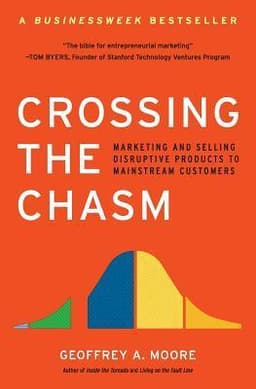
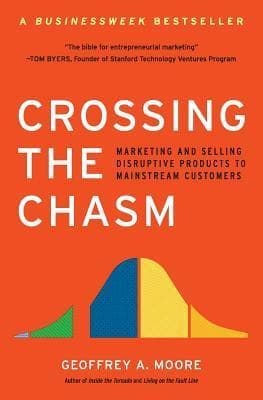
Crossing the Chasm Book Summary
Geoffrey Moore
"Crossing the Chasm" unveils the hidden challenges of launching disruptive technologies and provides a proven roadmap for navigating the treacherous gap between early adopters and mainstream markets, enabling companies to achieve market leadership and sustainable growth.
"Crossing the Chasm" unveils the hidden challenges of launching disruptive technologies and provides a proven roadmap for navigating the treacherous gap between early adopters and mainstream markets, enabling companies to achieve market leadership and sustainable growth.
Business
Management
Technology

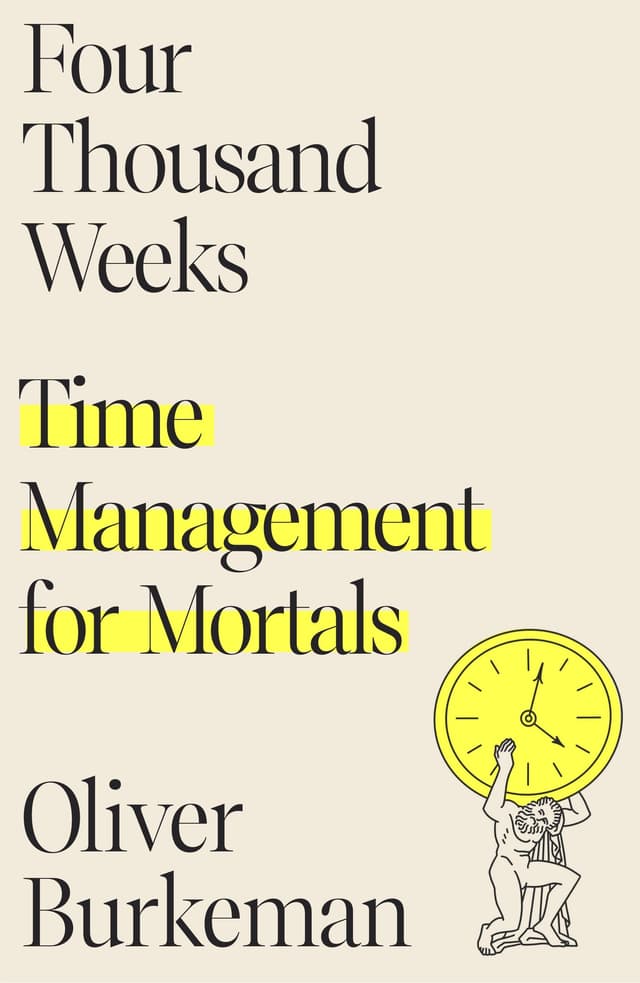
Four Thousand Weeks Book Summary
Oliver Burkeman
"Four Thousand Weeks" offers a radical perspective on time management, urging us to abandon the futile quest for control and embrace our finite existence. By accepting our limitations and making conscious choices, we can discover a more meaningful and fulfilling way to spend our brief time on this planet.
"Four Thousand Weeks" offers a radical perspective on time management, urging us to abandon the futile quest for control and embrace our finite existence. By accepting our limitations and making conscious choices, we can discover a more meaningful and fulfilling way to spend our brief time on this planet.
Philosophy
Personal Development
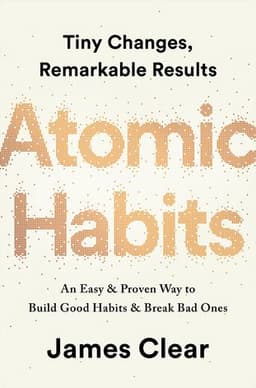
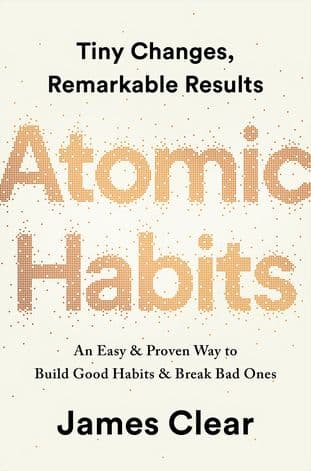
Atomic Habits Book Summary
James Clear
Atomic Habits reveals the surprising power of small habits, demonstrating how tiny changes can compound into remarkable results over time. By focusing on systems over goals and building identity-based habits, you can create lasting change and unlock your full potential.
Atomic Habits reveals the surprising power of small habits, demonstrating how tiny changes can compound into remarkable results over time. By focusing on systems over goals and building identity-based habits, you can create lasting change and unlock your full potential.
Productivity
Personal Development
Psychology

